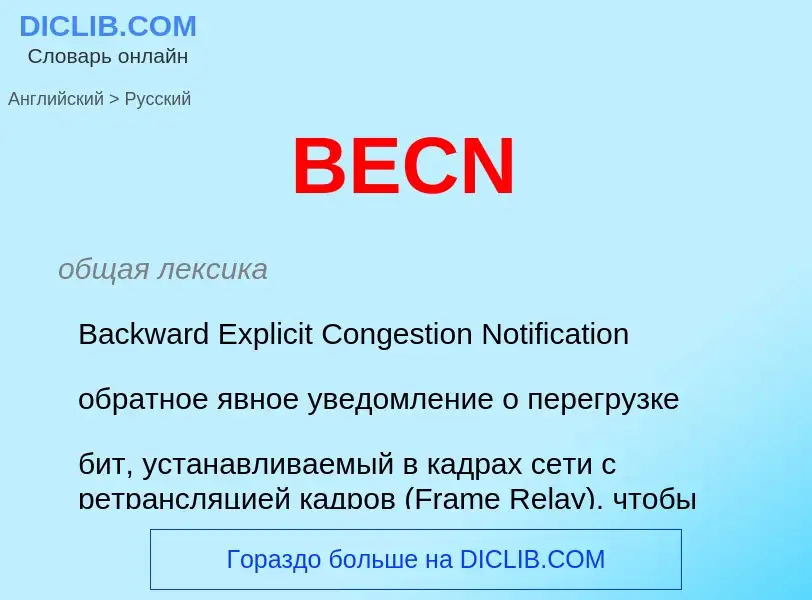Tradução e análise de palavras por inteligência artificial ChatGPT
Nesta página você pode obter uma análise detalhada de uma palavra ou frase, produzida usando a melhor tecnologia de inteligência artificial até o momento:
- como a palavra é usada
- frequência de uso
- é usado com mais frequência na fala oral ou escrita
- opções de tradução de palavras
- exemplos de uso (várias frases com tradução)
- etimologia
BECN - tradução para russo
общая лексика
Backward Explicit Congestion Notification
обратное явное уведомление о перегрузке
бит, устанавливаемый в кадрах сети с ретрансляцией кадров (Frame Relay), чтобы сообщить терминальному устройству о необходимости задействовать процедуру устранения перегрузки сети на передающем устройстве
общая лексика
FR
ретрансляция кадров, протокол [технология, сети] Frame Relay
интерфейс для высокоскоростной передачи кадров или пакетов. Действует на канальном уровне модели OSI, поддерживает несколько виртуальных соединений на один физический порт. Для управления потоком данных используется механизм уведомлений о приближении к состоянию насыщения: в направлении, противоположном затору, посылается сообщение BECN, а принимающей стороне посылается сообщение FECN
Смотрите также
Wikipédia
Network congestion in data networking and queueing theory is the reduced quality of service that occurs when a network node or link is carrying more data than it can handle. Typical effects include queueing delay, packet loss or the blocking of new connections. A consequence of congestion is that an incremental increase in offered load leads either only to a small increase or even a decrease in network throughput.
Network protocols that use aggressive retransmissions to compensate for packet loss due to congestion can increase congestion, even after the initial load has been reduced to a level that would not normally have induced network congestion. Such networks exhibit two stable states under the same level of load. The stable state with low throughput is known as congestive collapse.
Networks use congestion control and congestion avoidance techniques to try to avoid collapse. These include: exponential backoff in protocols such as CSMA/CA in 802.11 and the similar CSMA/CD in the original Ethernet, window reduction in TCP, and fair queueing in devices such as routers and network switches. Other techniques that address congestion include priority schemes which transmit some packets with higher priority ahead of others and the explicit allocation of network resources to specific flows through the use of admission control.



